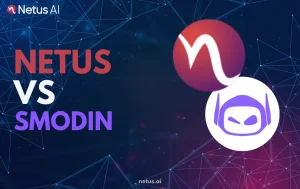
Netus vs. HumanizeAI | Netus.ai
Netus.ai vs. HumanizeAI: Which tool excels in AI bypassing, human-like rewriting or academic reliability? Dive into this detailed breakdown comparing features, accuracy or use cases.
Direct Plagiarism: What It Is and Effective Strategies to Prevent It

Content writer and editor for Netus.AI
Direct Plagiarism. In today’s world, easy access to information has led some individuals to engage in the unethical practice of using other people’s work without proper attribution, particularly in academic papers. This deliberate act of taking credit for someone else’s textual work is referred to as direct plagiarism. Plagiarism is a significant issue not limited to the academic sector; it also extends to various online articles. The proliferation of online platforms and resources like e-books and journal archives has made information readily available, contributing to the increasing instances of plagiarism.
While most cases of direct plagiarism are intentional, carelessness—such as forgetting to insert quotation marks—may also result in unintended plagiarism but also forgetting to use a Chat GPT remover. Individuals who use content without proper attribution may assume that their plagiarism will go undetected, but it’s essential to recognize that numerous advanced online tools can detect copied content with relative ease. Plagiarism detection software can quickly identify matching sources, making it easier to catch those who submit papers containing borrowed content.
Direct plagiarism consists of several subtypes involving the copying of an author’s original work without proper attribution. The two major forms of direct plagiarism include mosaic plagiarism and word-for-word plagiarism.
Mosaic Plagiarism:
Mosaic plagiarism is an intentional act where a writer incorporates text from another author, weaving their own words into the copied material to subtly alter its appearance. However, the fundamental meaning remains unchanged. This technique is designed to avoid detection by plagiarism scanners, but advanced detectors can easily identify this type of plagiarism.
Mosaic plagiarism also goes by the names patchwork plagiarism or patchwriting. Both terms reflect the attempt to conceal the copied content by integrating it with the writer’s own words.
Word-for-Word Plagiarism:
This form of direct plagiarism involves copying content without making any modifications. Word-for-word plagiarism can be intentional, but it may also fall under accidental plagiarism. In some cases, students copy reference material for their academic papers without properly attributing the source or using quotation marks, turning the passage into plagiarized content.
Small oversights may result in direct plagiarism, so it is vital to carefully review quoted and paraphrased passages for proper citations and quotation marks, respectively.
Academic institutions and other authorities implement strict consequences for direct plagiarism violations, particularly when it comes to blatant copying. Failing to recognize the different types of plagiarism – mosaic, patchwork, clone, verbatim, and global plagiarism – can lead to academic dishonesty charges, risking one’s reputation and potentially resulting in failure or more severe penalties.
It’s crucial to take appropriate measures to prevent direct plagiarism as it carries severe consequences and can negatively impact one’s academic and research career. Here are some useful strategies to avoid direct plagiarism:
Following these guidelines will help you maintain academic integrity and produce quality work while avoiding the pitfalls of direct plagiarism.
When using information from other sources to support arguments in a research paper, remember to add proper citations alongside the notes. This will ensure correct attributions and avoid missing citations when incorporating the material in academic papers.
It’s critical to be aware of the allowed percentage of paraphrased content that can be included in a paper. Academic essays should not be mere compilations of paraphrased passages from different sources. Adhere to the guidelines to avoid mistakes.
To prevent unintentional plagiarism, double-check the paper for missing quotation marks or incorrect attributions. After manually reviewing the document, it’s essential to use a high-quality plagiarism checker for added security. Plagiarism detection software can quickly identify instances of direct copying and generate a detailed report showing the percentage of copied words in the document.
A patchwork plagiarism scenario occurs when scattered phrases form a substantial portion of the paper. In this case, extensive rework is necessary. If the scanner detects a low percentage of scattered copied phrases, it doesn’t necessarily indicate direct plagiarism. However, even a single passage that’s identified as an instance of direct plagiarism is enough to render the entire paper as plagiarized.
Academic integrity is crucial, and examiners deal with direct plagiarism violations strictly. To prevent unintentional plagiarism, consistently adhere to the guidelines mentioned above, maintain a commitment to proper referencing throughout the paper, and utilize advanced plagiarism detection tools to verify the content’s originality.
Direct plagiarism is when someone deliberately copies another person’s work word-for-word without proper attribution in the context of academic writing. This includes copying phrases, sentences, or entire sections from a source without giving credit to the original author.
Some effective ways to avoid direct plagiarism include:
Direct plagiarism involves copying someone’s work word-for-word, while paraphrasing involves expressing the same ideas by rephrasing them in your own words. When paraphrasing, it is essential to provide proper citations to avoid unintentional plagiarism.
In higher education institutions, there are strict policies against plagiarism. The implications for students who commit direct plagiarism can include:
While direct plagiarism involves word-for-word copying of someone else’s work, mosaic plagiarism occurs when a person copies text from various sources and combines them within their own work without giving proper credit. On the other hand, self-plagiarism occurs when a person reuses their own previously published or submitted work as if it were new, without proper citation or attribution.
There are numerous technological tools available to help detect and prevent plagiarism. These tools employ algorithms to compare a document’s text against a vast database of sources, identifying matches and potential instances of plagiarism. By using plagiarism detection software like Copyleaks, Turnitin, or Grammarly, students can verify that their work is original and free of plagiarism before submitting their assignments.

Netus.ai vs. HumanizeAI: Which tool excels in AI bypassing, human-like rewriting or academic reliability? Dive into this detailed breakdown comparing features, accuracy or use cases.

Netus.ai vs. BypassAI: Which tool excels in AI bypassing, human-like rewriting or academic reliability? Dive into this detailed breakdown comparing features, accuracy or use cases.

Netus.ai vs. AIUndetect: Which tool excels in AI bypassing, human-like rewriting or academic reliability? Dive into this detailed breakdown comparing features, accuracy or use cases.

Netus.ai vs. AIUndetect: Which tool excels in AI bypassing, human-like rewriting or academic reliability? Dive into this detailed breakdown comparing features, accuracy or use cases.

Netus.ai vs. Paraphraser: Which tool excels in AI bypassing, human-like rewriting or academic reliability? Dive into this detailed breakdown comparing features, accuracy or use cases.

Netus.ai vs. Smodin: Which tool excels in AI bypassing, human-like rewriting or academic reliability? Dive into this detailed breakdown comparing features, accuracy or use cases.
@ 2024 Netus AI.